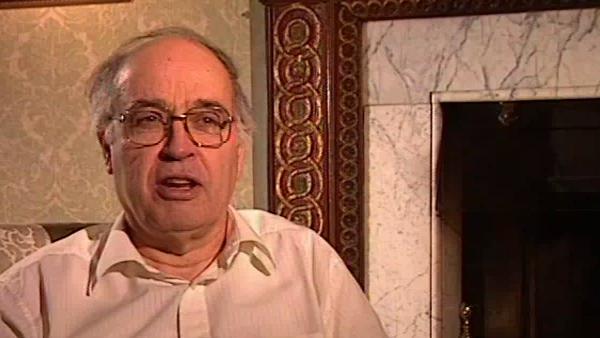Well at... at that stage I was interested with my other... other researcher, Frances Kirwan and others, arising out of my work with Bott. I was interested in the symplectic quotients which arise in algebraic geometry and... and their infinite dimensional generalisation to gauge theories and… which we did for Riemann surfaces. And so that was a... a rather nice framework, a cross between algebraic geometry and gauge theories and infinite dimensional pictures, a little bit of formalism. So that was what... what Frances Kirwan was working on, and she went on very successfully in that direction.
But it was clear from the way… the problems that you'd given Simon to work on that it was closely related to this, so when he came in it was, sort of, logical that we should, sort of, discuss things together. But I mean I... I didn't… he was then working, as you know, on a... on a particular problem to which he finished, he solved, but in the meantime he'd... he’d branched out and produced this idea of how to use the self-dual equations on general manifolds. But that was entirely his idea and when he first produced it I was a bit… well, I asked him all sorts of questions and in his first version of it, it wasn't that clear that it was going to be spectacular; it depended on some assumptions about the… the metric had to be… had to have some positivity conditions otherwise you... you didn't get clean results.
And then he worked... he worked harder and got rid of that by perturbation, showed that it didn't matter, then it was clear that it was going to produce some potentially spectacular results. But I wasn't sufficiently involved in the topology of those things to know exactly how that fitted into current theory. And it just so happened I was visiting the IHES in Paris – Easter I think – and I met there Michael Freedman who'd been doing the work... work on the topological theory, and I asked him. I said, ‘Would... would this sort of result be, you know, of interest? How would this fit into...?’ ‘Oh’, he said, ‘that would be spectacular, you know, totally unbelievable’. So then I went back and told Simon, you know, this would be great guns, you know, and so it was.
But I mean, I didn't know, and I don't think he knew exactly. I mean he knew that this had been an old problem which… Milnor's… which he was… special case which he was disposing of by these methods, but you needed to sort of know what was happening in the world at large to realise, you know, how this fitted into everything else. And it just so happened that because Freedman had been… finished off the problem on the topological side, he expected that with a little bit more work he would finish off the smooth case. And to be told that exactly the opposite was true was really, you know, a bit of shock to him. And so I went back and told Simon this and so then... from then onwards it was clear this was a big breakthrough and it... it all took off. So it was a… but… it all happened very fast, of course, within a matter of six months or so.






